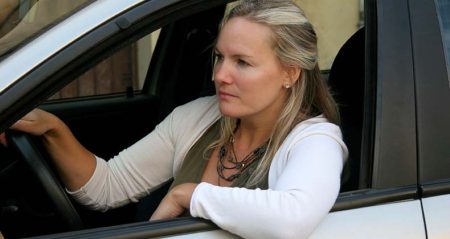Key takeaways
- Higher inflation and lower wages are increasing outstanding debts, especially among lower-income households.
- The steps to take include understanding what you owe, budgeting, resisting new debt and taking part-time work for extra money.
- When used correctly, debt consolidation loans or debt settlement methods can help reduce what you owe.
Inflation and slowing wages have created serious financial issues for many families. Among those challenges are increases in owed debt. In 2023, the average credit card balance per household stood at $6,501 (a 10 percent increase from the previous year), while personal loan amounts increased by 6.3 percent to $19,402.
Lower-income households tend to have the highest credit card debt-to-income ratio, making it even more difficult to pay off debt. However, even those on a low income can take steps to get out of debt.
1. Know what you owe
Before doing anything else, take a deep breath, sit down and determine what you owe and to whom. Evaluating your debt can be overwhelming. However, having that information in black and white provides a starting point for planning.
In addition to focusing on the bottom line — i.e., what you owe on each credit card or loan account — also pay attention to:
- Debt/loan interest rate
- Payment due date
- Minimum monthly payments
Don’t forget to include medical bills, mortgages or rent, utility bills and other expenses.
2. Create a budget
“Creating a budget is important for anyone who has a financial goal, especially when it comes to reducing credit card debt,” says Evan Press, a Certified Financial Planner with Equitable Advisors, LLC. “Doing so helps manage a person’s finances, so they can pay off that debt as soon as possible to avoid high interest rates.”
Whether you build your budget from scratch on paper or Excel or rely on the many online budget templates or apps, be sure to:
- List all sources of income.
- Determine fixed expenses (which don’t change), including auto payments, student loan payments and rent.
- Figure out variable expenses (which do change), including groceries, utilities, clothing and other costs.
- Subtract all expenses from your income.
The remaining amount is known as discretionary income. And that discretionary income, no matter how small, is what you’ll use to pay down debt.
3. Resist taking on new debt
If you’ve gotten into the habit of opening new credit card accounts and using them to pay other credit card debt or loans, now is the time to stop. You’re only shuffling debt from one place to another rather than paying it down.
Resist those shiny snail-mail credit offers or email loan enticements advertising preapprovals and low interest rates. Don’t open new credit card accounts or apply for personal loans (unless there is a strategic reason to do so). Also, freeze unnecessary spending.
However, you may want to consider using a balance transfer credit card (and its 0 percent introductory APR) to consolidate debt. However, if you’re already stretching your income, moving your debt might create more problems.
4. Pick a paydown method
Not all debt paydown methods are created equal. The snowball and avalanche debt strategies provide different helpful approaches, depending on your situation.
Debt snowball: Starting small
Through a debt snowball strategy, you pay the minimum amount to all creditors and focus extra dollars on the account with the smallest balance. When you’ve paid off the account, turn your attention — and the extra money — to the next-smallest balance and dedicate all extra dollars to paying that down.
Repeat the process until all balances are down to zero. As you pay down debt and close accounts, your available money “snowballs” into larger amounts, giving you more resources to handle the remaining debt.
The benefit here is a quick win. Paying the smallest balance first can be a psychological boost, giving you the impetus to move on. However, this can be a costlier strategy. While you pay down those small-balance accounts, credit card balances and loans with higher interest rates continue growing.
Debt avalanche: Going big
Like the snowball method, the debt avalanche strategy means making minimum payments to all creditors and lenders. But in this case, you use your extra money to pay the debt with the highest interest rate.
When that account is paid down, you focus on the debt with the next-highest interest rate. Once that account has a zero balance, work on the next-highest-interest-rate debt. Repeat and continue until all debt is paid.
The debt avalanche approach removes expensive debt first, saving you costly compounded interest rates. You need patience and motivation, especially if that high-interest-rate account is one of your larger debts. It could take months to pay it down.
Debt snowflake: Small and steady
In addition to the above paydown suggestions, you can add the debt snowflake strategy. Take steps toward small savings from everyday activities, then direct those few extra dollars toward your debt.
Small savings efforts can include:
- Using grocery store coupons and buying generic products
- Relying on carpooling or public transportation to save gas
- Selling items on online marketplaces or through garage/yard sales
- Resetting the thermostat (and other utility savings)
Other examples include using cash-back incentives from credit-card usage to pay down debt or finding money in jacket pockets or the bottom of purses.
A few coins from couch cushions won’t clear your debt overnight. However, as multiple snowflakes lead to massive snow drifts, these small savings can reduce your debt.
5. Examine other options
In addition to your budget and paydown efforts, other options exist to help you pay down your debt, such as debt consolidation loans and debt settlement methods.
Debt consolidation loans: Rolling many into one
With a debt consolidation loan, you obtain a lump sum from a bank or personal lending institution with which you can pay off debt. You’re then responsible for repaying that consolidation loan.
Most debt consolidation loans carry a fixed interest rate that can be lower than variable credit card interest rates. These loans can also make budgeting more manageable. You pay a single fixed amount rather than paying off multiple accounts with variable interest rates each month.
“Consolidation loans can be effective as long as the interest rate and fees to move the debt are better than the rates or fees the person currently has,” Press says. “Just because it’s consolidated doesn’t mean it’s better.”
These loans are generally available only to those with good or excellent credit scores. That credit score also determines a consolidation loan’s term and interest rate.
You don’t need a high income to maintain a good credit score, but you must:
- Pay all bills on time.
- Lower credit card use score (“utilization”) to under 30 percent of your debt.
- Check your credit reports regularly to ensure there are no mistakes.
Debt consolidation can be a good strategy if you owe multiple balances and have a good credit score.
Debt settlement: Negotiating for less
Debt settlement is a strategy in which you and a creditor agree to settle the amount on your card or loan for less than what you owe by reducing the principal or interest.
There are two paths to debt settlement:
- Do it yourself: Handling debt settlement yourself involves contacting each creditor you owe, presenting your case and negotiating a settlement amount. This can help save you money and give you better control over the process. It also requires time, patience, perseverance and negotiating skills.
- Work through a third-party company: If you don’t have the time or patience to deal with every creditor, you could work with a third-party debt settlement company. That company contacts creditors on your behalf and negotiates an agreement that works for both sides. The company might tell you to stop making payments to creditors while they negotiate. Instead, they’ll direct you to put those payments into a special escrow account for payment when a settlement is reached.
Debt settlement, sometimes called debt relief, is a method of last resort before bankruptcy. The settlement remains on your credit report for seven years, and your credit score takes a hit if you stop making payments. You also need cash on hand to offer the creditor. Furthermore, the IRS taxes the forgiven amount as ordinary income.
However, if you’ve tried other methods and haven’t been able to make a dent in the debt, debt settlement might be the key.
Extra part-time work might be helpful if you’re still struggling to pay off debt with a low income. Ask your employer if there are extra hours available. If not, the gig economy offers multiple opportunities to earn money through in-person or online efforts.
If you go this route, be sure the extra work fits your schedule and doesn’t add stress. Also, ask your primary employer if they’re okay with you taking on part-time work, as some companies have “moonlighting” restrictions.
The bottom line
Getting out of debt with a low income can be challenging. But it’s not impossible. Following the strategies mentioned above can help you pay down those balances.
Doing nothing will only get you deeper into trouble. Resolving debt issues can help improve your credit score and bring you back on sound financial footing.
Read the full article here










